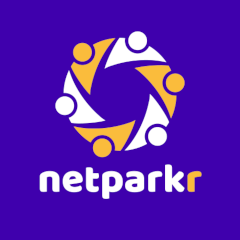Yaron Shapira co-founded 8fig in 2020 with the goal of democratizing e-commerce and giving small e-commerce enterprises the resources they need for development. He graduated from Israel’s Bar Ilan University with a Bachelor of Science in Computer Science, Bachelor of Arts in Economics, and Master of Business Administration. 8fig is a growth partner for online retailers, offering them tremendous value on a single platform. It provides users with an AI CFO, CMO, and COO to improve business choices and establish long-term plans, ensuring that they are always on the right path for growth.
Co-founding and serving as 8fig’s CEO is Yaron Shapira. He has successfully created and sold a number of businesses and is at heart an entrepreneur. These include the mobile payment app Check, the retailer for travel and culture The Culture Trip, and the global platform for payment security Qlarium. He saw a critical requirement for an AI CFO in dynamic eCommerce businesses without an executive staff based on his professional expertise in payment systems, content development, and the supply chain. These tiny firms struggle to make wise financial decisions without a CFO, which limits their ability to expand.
He co-founded 8fig in 2020 with the goal of democratizing e-commerce and giving small e-commerce enterprises the resources they need for development. Yaron graduated from Israel’s Bar Ilan University with a Bachelor of Science in Computer Science, a Bachelor of Arts in Economics, and a Master of Business Administration.
Please provide us with some information about your business. What does 8fig do?
8fig is more than just a business or solution supplier; it is a growth partner for online retailers, offering them tremendous value on a single platform. Our goal is to democratize e-commerce by providing small e-commerce businesses with the tools they require to thrive and grow. tiny teams or lone proprietors typically run tiny e-commerce businesses. They are unable to make the optimal judgments for cash flow, operations, marketing, and other factors because they lack the knowledge and experience of an executive team. They also lack working capital.
We made the decision to develop a platform that serves as a virtual CXO and provides users with an AI CFO, CMO, and COO. It gives these small suppliers the data-driven tools they require to improve business choices and establish long-term plans, ensuring that they are always on the right path for growth.
We provide a dashboard for sales analytics and a supply chain planning tool in addition to a flexible, cash flow-friendly financing option to supply them with working capital. This is only the beginning of what we plan to do to support the growth and success of small ecommerce vendors.
Describe your background and the founding of your company.
I launched 8fig after an exciting career that started with engineering. I obtained experience in mobile app development and payments when I co-founded the mobile payments business Check. I joined a separate content production business when Intuit bought that firm. eventually, I co-founded Qlarium with the same business partners I would eventually team up with to create 8fig. The risks in supply chains were funded by Qlarium, which increased our understanding of the value of supply networks in e-commerce.
After analyzing the industry’s problems, we found that ecommerce merchants’ inability to grow and their frequent lack of a capable executive team to guide them in making sound judgments are the main problems. Thus, 8fig was developed to fill the void left by the lack of a “guide” for ecommerce businesses to use while planning. We were able to create a solution that effectively fulfills these criteria because to our expertise in supply chains, payments, mobile app development, content production, and mobile technology.
Which top three skills, in your opinion, are essential for entrepreneurship success? Why?
A lot of monitoring is required for effective listening. There are probably a lot of things that you don’t know that your peers do.
Try to imagine something amazing in your head. Try to picture a solution for the problems you’ve learnt about from clients.
Business savvy is essential for any business. While creativity and focus will help you succeed, revenues are determined by the bottom line.
What are your long-term goals and how do you plan to grow 8fig?
For our customers, we want to dramatically increase value. More data than any other firm in our sector, including the biggest platforms and networks, has been gathered by 8fig. We have access to vast amounts of data that no one else does. We want to create value for our clients using this data in a way that no one else can. We can create a platform with a lot of value thanks to this knowledge and our skills in the supply chain, engineering, content development, and payments. Customers will be drawn to 8fig because of this. A virtual CXO, sales analytics, payment processing, and other solutions that we now provide clients with or that we will soon provide are only the tip of the iceberg in terms of what we are building. Our offers are always growing, and we want to provide our customers even more value.
What effects have the quarantine and pandemic had on you or your startup?
This is more relevant to how the epidemic has affected the e-commerce sector. E-commerce and internet shopping were required of people. They were accustomed to having to purchase online since they were restricted to their houses. It was pretty comfortable to them. They had easy access to top-notch goods and services, which was also highly practical. This is shifting the retail sector from physical storefronts to online retailers, which is good for both our company and society.
How do you set yourself out from your competitors?
centered mostly on usefulness. We help our clients with planning in addition to helping them with money. Plans must be adjusted when conditions change, which e-commerce firms are aware happens weekly. This is exactly how we operate. There isn’t a single plan that you create before carrying it out. We are aware that is not how it operates. We create a plan, which we then modify as we go. We specifically accomplish this for our clients, which sets us apart from our rivals.
What did you learn from the three greatest mistakes you made while starting your business?
You must make a distinction between decision-making and consumer communication. They ought to be two separate roles inside the company. Whoever talks with the client should be wholly prejudiced in their favor, as it should be. They serve the firm in this capacity. They must show the customer compassion and support them at trying times. As an alternative, whomever makes the decisions has to be unbiased and data-driven. They must be objective toward the client as well as the business. A biased decision-maker could make less-than-ideal decisions. As a result, you must separate these two operations. We didn’t do it at first; we discovered it along the road, and it has since been divided.
Not every expansion is made equally. While many organizations have growth as a goal, it is crucial to give meaningful expansion precedence over quick expansion. In order to create your growth targets with the requirements of your customers and partners in mind, I refer to this as “meaningful development.” Spend some time learning more about your ecosystem and putting that information to use when making future business decisions. Think about if your expansion will benefit your customers; you must be dedicated to guaranteeing their success. One of my previous firms saw significant growth, but we were capable of going even farther if we had focused more on optimizing for consumer needs.
The early appointment of an HR manager is crucial. Your firm will benefit significantly from having a strong HR presence. HR is crucial for accurately defining your company’s DNA, mission, and identity as well as for advancing the well-being of your employees. You’ll save time and effort by hiring an HR manager early on, and your company’s daily operations will become more confident as a result.
What marketing tactic has been the most successful for you?
Our focus on content production is partly responsible for our success. We put less of a focus on trying to force our message on clients. Instead, we produced information, such as webinars, films, and white papers. We produced a ton of helpful information for the community of e-commerce vendors. When you start to add value, people will start to react to you. People will start to follow you as soon as they start to pay attention to you. We have made the decision to move forward in this way in terms of marketing. Instead of trying to force our message, we want to add value. This, in my opinion, is the answer.
What challenges did you face that you overcame the most?
Our idea, the way we support e-commerce, the way we examine the supply chain, and the way we approach e-commerce finance are all quite new. It was difficult to persuade institutions and investors to help us by explaining this idea to them and getting their backing. For us to advance, we needed their help. We were able to get through this difficulty with straightforward execution. We had a meeting with our first potential customer and did well. We returned to our second customer and did so. We did a fantastic job of visiting the third, fourth, fifth, sixth, and seventh floors. We then presented these findings to the institutions and investors. It is quite challenging to challenge outcomes. This is how we overcame this significant difficulty.
What did you manage to accomplish with your initial company concept?
The name of my initial company idea was “digital video.” Back then, everyone of our homes had a VCR. You set the recorder to start recording at the desired time if you wanted to capture a TV movie that started at that moment. You couldn’t see the movie if you got home an hour late. You couldn’t start viewing the movie from the beginning; you had to wait till the end. I thus proposed switching from a VCR to digital video. The movie will keep being recorded, but I may watch it anytime I choose. I had this idea. I said to myself, “Hey, you can also take the schedule of the television programs and present it attractively.” As I was thinking about this the next year, TIVO was unveiled in the US. I accomplished nothing with my idea because TIVO was the first effective answer to this problem because it had previously been done. Obviously, that doesn’t apply in the modern world.
What would you alter if you had to restart your business?
I don’t think I would have made any other decisions. I’ve done this before, so I can tell you what we did right based on what I’ve learned from my past ventures. In my former employers, we started with the technology. We discovered the issue and created the technology to address it. When we got the technology, we went to the market to show that we could solve their tremendous problem using technology. The trouble is that the issue might not be their top priority, and your solution might not be the best one for the situation. This makes it incredibly challenging. Making a U-turn is the answer. Every piece of business advice you read from entrepreneurs will stress the value of accepting pivots.
Starting with the business is another option to pivoting, which 8fig did not use. As a result, we did not develop technologies from scratch. We approached the client and made a suggestion on the first day. They recommended this as a great option for us, so we handled all of the paperwork by hand, including Excel spreadsheets, PDFs, and customer communication. When it was initially asked, this was the response. We had nothing; we didn’t have a website or an application. We then carried out the same procedure for the second and third consumers. After determining that the company was profitable, we started working on the technology. Our situation is one where business is catching up to technology rather than the other way around. The business does not make an effort to stay up with technology.
Which top three internet tools and resources do you use most frequently to grow your business?
I use Google Data Studio personally. It is tremendously helpful to me for building data presentations, linking to databases, and effectively and simply displaying information. It may be accessed from anywhere and is straightforward to share.
The 8fig team uses Mixpanel to keep tabs on customers. The engineers utilize their own tools to keep track of jobs, defects, and priorities within the team; they are much too numerous to list here.
How would you spend $1,000 if you had the information you now have to establish a new business?
The money would go into Google Adwords. I would utilize the money I had left over to create a single landing page, which may cost between $50 and $100, and then use Google Ad Words to pay for visitors. I would try to add relevant keywords to the microcopy of my advertisements and track clickthrough rates. When someone clicks, they are taken to my landing page, where I can see if they continue. If they do, there is a company. In the absence of that, you have no business. This strategy has failed, therefore try to get another $1,000 and come up with a new one.
What keeps you steadfast and inspired to go on running your business?
This describes who I am. Given that I have worked at both successful and failing businesses, including 8fig, this is hardly a unique piece of advise. My character serves as my source of inspiration. I give anything I’m doing my whole attention. I think about it in my leisure time because I find it to be significant. I always have to overcome obstacles and adjust to changing conditions. I’m inwardly motivated by this since I enjoy and value it.
For further information:
You can contact me on Linkedin or check 8fig.co.
We gather unique business case studies from all over the internet, to inspire you with a wide range of business ideas. This case study was supervised by our team and it definitely caught our interest. You can find other inspiring business stories here.







